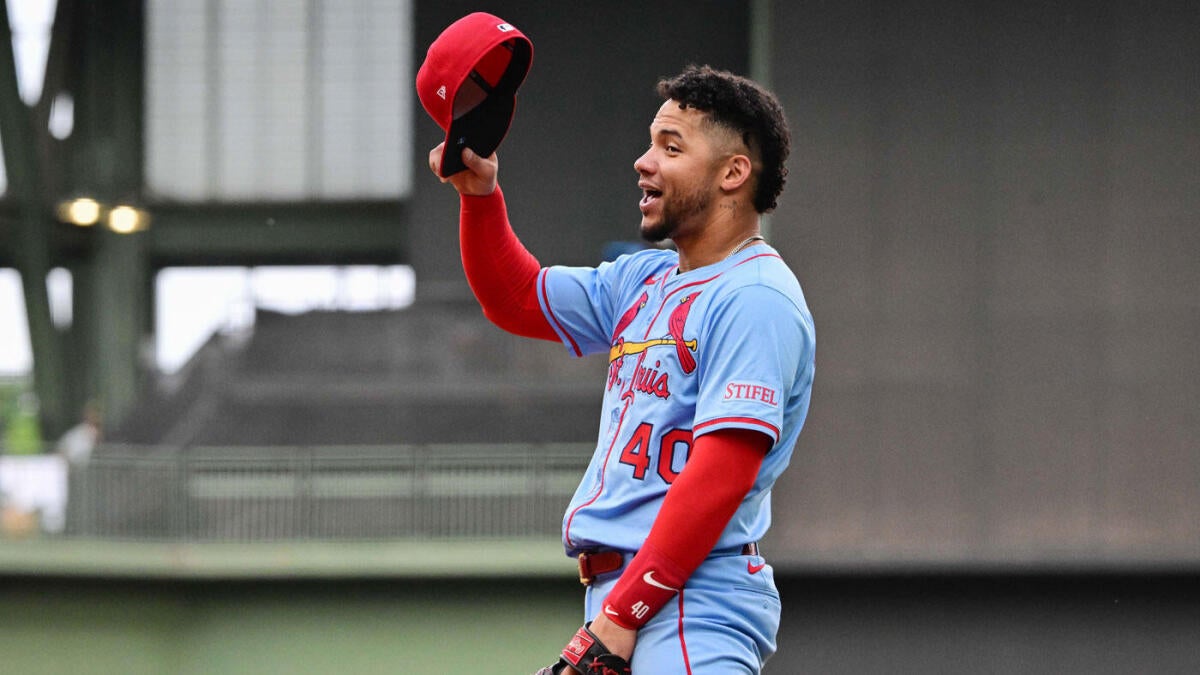The recent confrontation involving Willson Contreras of the St. Louis Cardinals and the Milwaukee Brewers serves as a compelling case study in understanding the complex interplay of player roles, competitive intensity, and personal dynamics within Major League Baseball. This incident illuminates much more than an on-field collision, revealing how athletic strategy, emotional expression, and familial connections weave together to shape the narrative of a high-stakes sporting event.
Collision at First Base: A Flashpoint of Strategy and Tension
At the heart of the episode is the physical clash between Contreras, newly assigned as a first baseman, and Brewers baserunner Caleb Durbin. This moment not only sparked immediate verbal exchanges but also underscored the intense, often volatile environment that surrounds MLB in-game confrontations. Contreras’ repositioning from catcher to first base in 2023 is significant here; this move was driven by the Cardinals’ need to mitigate his defensive vulnerabilities while maintaining his offensive contributions. First base inherently involves frequent contact with baserunners, making confrontations almost part of the role’s fabric.
This shift introduced a fresh dynamic into Contreras’ gameplay, exposing him to a different kind of physicality and psychological challenge. The tumble of Durbin and subsequent “chirping” from the Brewers amplified the intensity, highlighting how positional changes can influence player interactions and on-field confrontations. The umpire’s intervention was a critical moment, reflecting how quickly competitive spirit can escalate from physicality into heated exchanges, emblematic of baseball’s blend of athleticism and psychological warfare.
Contreras’ Defiant Response: Embodying the Mental Game
Contreras’ reaction following the collision was both forceful and symbolic. His vociferous rebuttal to the Brewers’ verbal taunts and his pointed glare into their dugout after hitting a homerun demonstrated a clear message: the conflict was far from over. His sharp verbal critique of an unidentified Brewers player who avoided direct confrontation further illustrates Contreras’ embrace of the mental facets of rivalry. By openly calling out perceived gamesmanship, he portrayed himself as not just a skilled athlete but a fierce competitor unwilling to back down.
This exchange underscores baseball’s longstanding culture of “chirping,” where psychological tactics on and off the field play a crucial and recognized role. Contreras’ fiery demeanor not only fuels his own competitive edge but also energizes his teammates and intensifies the rivalry, contributing layers of drama that engage fans and elevate the sport beyond mere physical contest.
The Intersection of Career Trajectory and Family Bonds
The incident gains additional depth when viewed against Contreras’ broader professional journey and unique family dynamic. His substantial five-year contract with the Cardinals positioned him as the heir to Yadier Molina’s defensive legacy, raising expectations especially as he transitioned to first base to accommodate defensive challenges. This context frames the collision and ensuing altercation as part of a larger narrative about adaptation, pressure, and leadership within a storied franchise.
Adding a compelling emotional layer is Contreras’ relationship with his brother, Williams Contreras, a catcher for the Brewers. The brothers recently made baseball history by both homering in the same game—a milestone that contrasts sharply with the on-field rivalry witnessed here. Willson’s decision to withhold antagonizing his brother while directing his competitive energy at the Brewers’ dugout highlights the delicate balance athletes navigate between professional conflict and personal loyalty. This sibling storyline enriches the event’s narrative impact, illustrating how deeply personal stories coexist with the public spectacle of professional sports.
Ripple Effects: Team Morale and Fan Engagement
Beyond individual pride and rivalry, the incident had tangible effects on the Cardinals’ team dynamics and their performance trajectory. Breaking out of a six-game losing streak with an 8-5 victory where Contreras’ homer was pivotal injects the episode with significance. His leadership and resilience amid tension likely buoyed team morale, demonstrating how personal conflict can sometimes catalyze collective success.
For fans, such moments heighten emotional investment. The blend of athletic skill, psychological interplay, and personal narratives crafts a rich tapestry that keeps audiences deeply connected to the game. Conversations sparked by this incident—on sportsmanship, rivalry, and emotional expression—invite fans into a more nuanced understanding of the sport’s human dimensions.
Conclusion: A Microcosm of Baseball’s Complex Drama
The Willson Contreras collision and follow-up exchanges encapsulate the multifaceted nature of contemporary Major League Baseball. They reveal how evolving player roles, fiery personalities, and family ties are inseparably linked with the sport’s inherent competitive drama. More than physical contact, this incident illustrates baseball’s ongoing tradition of psychological combat and emotional intensity.
Through Contreras, a player adapting to new positional demands and asserting his identity amid personal and professional pressures, the episode captures the essence of sports as a human saga. It serves as a vivid reminder that beyond statistics and scores, baseball is a dynamic narrative of rivalry, resilience, and complex relationships—elements that resonate deeply with players and fans alike, enriching America’s pastime with enduring significance.

